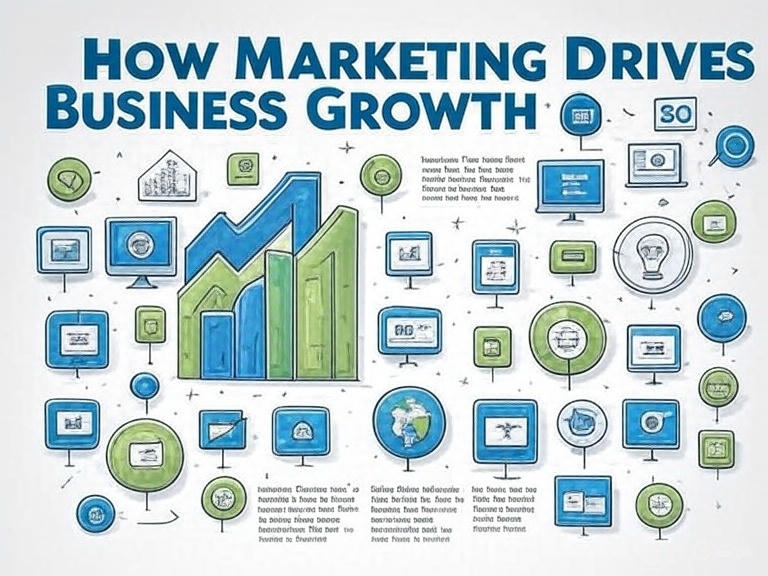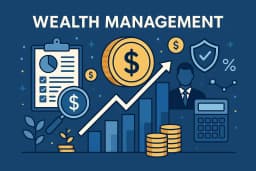Marketing explained: How marketing drives business growth
Marketing guide explores how effective marketing strategies can help you understand your customers, build strong brand value, increase sales.
Neha Singh
2 min read
16 Jun 2025

What is marketing?
Marketing is the strategic process of creating, communicating, delivering, and exchanging value to meet the needs of a target audience, with the ultimate goal of driving profitable customer action and fostering brand loyalty.
Key Points of Marketing:
- Understand customer needs and wants
- Create value through products or services
- Promote through ads, social media, etc.
- Build customer relationships
- Help grow sales and business
Types of marketing
1. Traditional Marketing
- TV and Radio Advertising
- Print Marketing—Magazines, newspapers, flyers.
- Outdoor (OOH)—billboards, transit ads, signage.
- Event Marketing—Sponsoring or hosting live events.
2. Digital Marketing
All marketing that uses digital channels:
- Search Engine Marketing (SEM)—Paid ads on Google/Bing.
- Search Engine Optimization (SEO)—Organic ranking in search engines.
- Email Marketing—Newsletters, drip campaigns.
- Social Media Marketing—Facebook, Instagram, TikTok, LinkedIn, etc.
- Content Marketing—Blogs, videos, and guides to attract & educate.
3. Inbound Marketing
Pulls customers in by providing value first: Blogs, YouTube videos, free tools, educational content Uses SEO + content to attract leads
4. Outbound Marketing
Pushes a message out to a wide audience:
Cold emails, cold calls, TV/radio ads, display ads
Often seen as more interruptive
5. Influencer Marketing
Collaborating with content creators or social media figures to: Reach niche audiences. Build brand trust and social proof Great for fashion, beauty, lifestyle, gaming, and B2C brands.
6. B2B vs. B2C Marketing
B2B (Business-to-Business): Longer buying cycles, relationship-driven, LinkedIn-heavy. B2C (Business-to-Consumer): Fast decisions, emotional appeal, social/digital heavy.
How Marketing Drives Business Growth -
1. Clarifying Business Objectives
- Increasing revenue or profit margin.
- Expanding into new markets.
- Acquiring new customers.
- Increasing customer lifetime value.
2. Build a Growth-Focused Marketing Strategy
A. Customer-Centric Positioning
- Identify your ideal customer profile (ICP).
- Craft a value proposition that clearly differentiates your offer.
B. Full-funnel marketing approaches use a balanced mix of strategies across:
- Top of Funnel (TOFU)—awareness (SEO, paid ads, PR, social media, influencers)
- Middle of Funnel (MOFU)—Consideration (Email Nurturing, Webinars, Case Studies)
- Bottom of Funnel (BOFU)—Conversion (Retargeting Ads, Sales Enablement Content)
3. Drives Sales
Marketing generates leads and nudges them through the funnel:
- Promotional campaigns and CTAs
- Email sequences and retargeting ads
- Conversion-optimized websites or landing pages
4. Build Trust and Credibility
Customers buy from brands they trust. Marketing does this via:
- Consistent branding and storytelling
- Social proof (reviews, testimonials, case studies)
- Thought leadership content
5. Generates insights of innovation
Marketing data reveals what people want (and don't), guiding
- New product development
- Pricing strategy tweaks
- Market expansion opportunities
📈 Business Growth Guide: 8 Key Strategies for Success
- Know Your Market
Understand what your customers truly want. Analyze competitors, monitor trends, and identify market gaps to stay ahead. - Define a Clear Goal
Set a single, measurable objective—whether it’s increasing revenue, gaining new users, or expanding reach. Focus your strategy around it. - Create a Smart Plan
Break your goal into actionable steps with realistic timelines. Assign roles efficiently and leverage your team’s strengths. - Optimize Sales Strategy
Communicate your value clearly. Leverage digital marketing, authentic content, and customer testimonials to drive conversions. - Minimize Operational Costs
Be resourceful. Utilize automation tools, streamline processes, and eliminate inefficiencies to reduce unnecessary spending. - Track Key Metrics
Monitor sales, expenses, and user behavior. Use data insights to refine your strategy and make informed decisions. - Scale Your Team Thoughtfully
Hire slowly but smartly. Invest in training and culture to build a team that drives long-term growth and innovation. - Stay Ahead of Trends
The business landscape evolves rapidly. Stay informed, continuously learn, and adapt to emerging technologies and consumer behavior.
.jpg)
Conclusion—
Marketing is the engine of growth. It brings in the right people, builds lasting trust, and turns value into demand. It builds visibility in saturated markets, cultivates trust in skeptical buyers, and creates momentum when growth stalls. Smart marketing strategies don’t just chase attention; they align brand values with customer aspirations, creating emotional resonance that drives long-term loyalty.



.jpg&w=256&q=75)
.jpg&w=256&q=75)